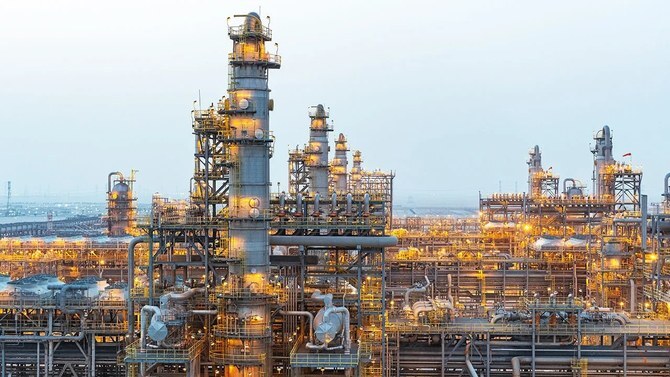
07 Nov 2024
RIYADH: Saudi Aramco has reduced its December pricing for Arab Light crude oil for Asian buyers, according to the latest price list released by the state-owned oil giant. The official selling price for Arab Light crude was cut by 50 cents, bringing it to $1.70 per barrel above the regional benchmark.
Similarly, the OSPs for Arab Extra Light and Super Light grades were also reduced by 50 cents per barrel for December, while the OSPs for Arab Medium and Heavy grades saw smaller cuts of 40 cents per barrel.
For North America, Aramco set the December OSP for its flagship Arab Light crude at $3.80 per barrel above the Argus Sour Crude Index. The price differential for Arab Light crude in Western Europe was set at $0.15 above the ICE Brent benchmark, according to an official statement.
Aramco produces five grades of crude oil: Super Light, Arab Light, Arab Extra Light, Arab Medium, and Arab Heavy.
These grades are distinguished by their density: Super Light has a density of more than 40, Arab Extra Light ranges between 36 and 40, Arab Light between 32 and 36, Arab Medium between 29 and 32, and Arab Heavy has a density of less than 29.
The global oil market has been under pressure in recent days, with crude oil prices falling 2.5 percent on Wednesday, ending a five-day winning streak.
This decline was largely attributed to a stronger US dollar, as early reports suggested that Donald Trump is edging closer to securing a second term in the White House. A stronger dollar tends to exert downward pressure on oil and other commodities, making them more expensive for buyers using other currencies.
As a result, Brent crude oil futures dropped to $73.64 per barrel, marking a 2.5 percent decrease from the previous close of $75.53. Similarly, West Texas Intermediate crude futures fell to around $70.22 per barrel, down 2.45 percent from the prior close of $71.99.
Crude oil prices have been subject to significant fluctuations recently, influenced by several key factors. These include OPEC+’s decision to delay its December production plans for the second time, rising tensions in the Middle East, expectations surrounding the upcoming US Federal Reserve policy meeting, and early signs of economic improvement in China, the world’s largest crude importer.